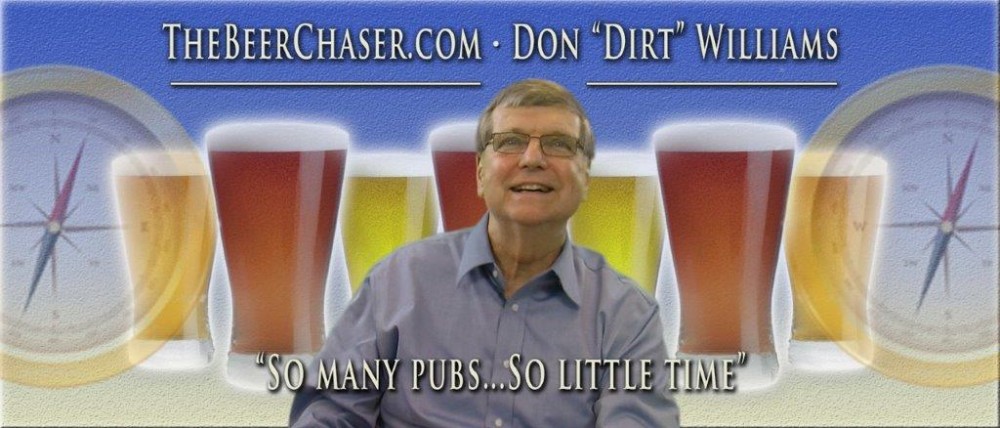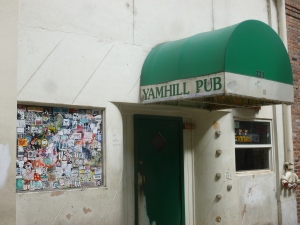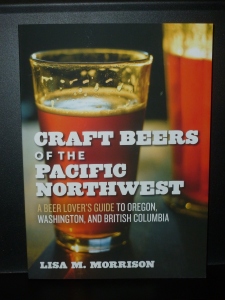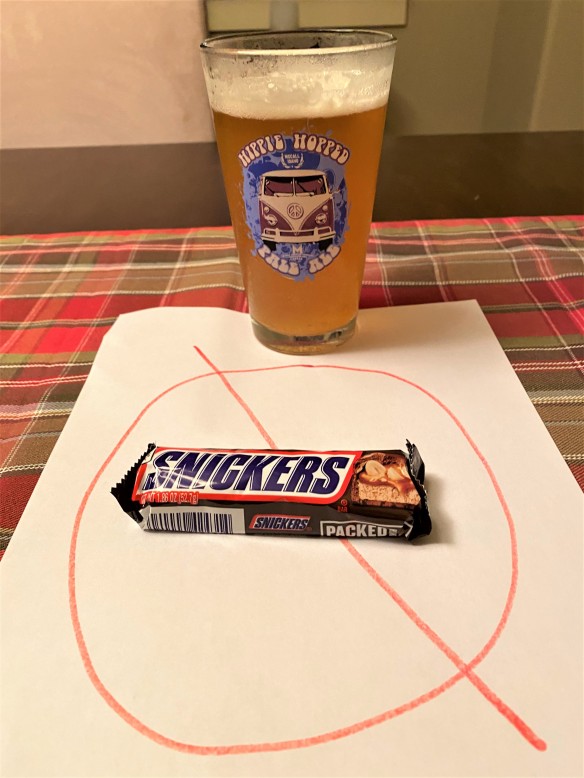(Welcome back to Thebeerchaser. Since this is a long post, if you are seeing it through an e-mail, please visit the blog by clicking on the title above to see all of the photos and the narrative is not clipped or shortened.)
Happy Holidays, Beerchasers. In what may be my last post of 2020, I will address one topic which is very interesting, yet tends to perplex and frustrate me. Let’s talk about
The Taste of Beer…..
Although this blog is primarily about bars and breweries, I often mention beers – especially those produced by the various breweries visited and which strike a chord.
I’ve covered “basic” beers from the $1.50 Happy Hour PBRs at the historic Yamhill Pub *1 in downtown Portland and the $1.00 draft Hamms (it used to be all day on Wednesdays…) at The Standard in Northeast Portland.
*1 A November story in Willamette Week stated that this institution – at one time it sold more PBR than any bar in Oregon and in the ’90’s was no. 5 in North America – may have to close. “General manager Kevin Hill has launched a GoFundMe campaign to save the Yamhill Pub, which is struggling financially during the most recent governor-ordered restrictions on dine- and drink-in service.”
And conversely Janet and I enjoyed a Grolsch Premium Lager in Amsterdam’s Cafe Karpershoek in 2013 – the oldest pub in Amsterdam dating back to 1606 when Dutch sailors and merchants bellied up to the bar.
We’ve experienced some of the wonderful and innovative craft beers such as the Shanghai’d English Style IPA – a 2018 Gold Medalist at the World Beer Cup produced by entrepreneur, Adam Milne at Old Town Brewing – in Portland, Oregon where one can enjoy some of the finest micro-brews on the planet.
Now, I also remember life at Oregon State University in the late ’60’s, when the brew choices were all essentially “beer you could see through.” I loved Schlitz Dry beer although Blitz Weinhard was plentiful on campus. Of course, when one of the frat bros made a trip to a state in which you could buy a case of Coors – not available in Oregon until 1985 – he gained immediate popularity and new friends.
However, what mildly irritates me are reviews – those where beer geeks – similar to some snooty wine connoisseurs – go into extravagant, grandiose and sometimes ridiculous detail describing how a beer tastes.
 That said, I realize that producing the ingredients for beer and the brewing process itself has gotten very technical and increased in sophistication to produce the outstanding mix of products from which beer drinkers can choose.
That said, I realize that producing the ingredients for beer and the brewing process itself has gotten very technical and increased in sophistication to produce the outstanding mix of products from which beer drinkers can choose.
For example, programs such as the Oregon State Fermentation Science Major have trained and educated outstanding brewers and enhanced the quality and flavor of beer immensely – “a hands-on applied science addressing the biological, chemical and physical processes of fermented foods, including those used in the production of wine, beer, and spirits…..”
I’ve progressed from not really knowing much about beer except that it’s much better really cold and in a frosted mug and have gained an appreciation for the rich history of brewing which goes back thousands of years.
“…..ancient Chinese artifacts suggested that beer brewed with grapes, honey, hawthorns, and rice were produced as far back as 7,000 BC.” (Wikipedia – The History of Beer.)
I’m trying to educate myself on types of beer (ales and lagers – depending on the fermenting process), brewing styles, differentiation in ingredients and elements of taste.
There are some great online references and books such as the highly-rated The Beer Bible by Northwest author, Jeff Alworth who is also the originator of the Beervana blog. His almost 600 page book, with five appendices, could fill an upper-division college course on beer.
Lisa Morrison – also known as The Beer Goddess and a previous Beerchaser of the Quarter on this blog also wrote a good basic book on NW regional beers in 2011 – Craft Beers of the Northwest.
And after viewing the following sentence on page four of Jeff Alworth’s book, I thought that perhaps I was being too cavalier in dismissing the intricacies of beer taste. Was I missing something when I raised a mug?
“When you sit down with a glass of beer, you do a lot more than taste it. You will eventually put your papillae to the task, but they won’t work alone. Your eyes take in its color, clarity and vivacity.
Your nostrils detect sharp or subtle aromas drifting off the surface. When you taste, you’ll be smelling the beer while its inside your mouth. Your tongue, meanwhile, will be noticing whether its prickly with carbonation or smooth and still, whether it is thin or creamy or thick. You don’t merely taste a beer, you experience it.”
However, after looking up the definition of “papillae” (a small rounded protuberance on the tongue) and realizing that I don’t really think about the prickly nature of beer while quaffing, I realized that I should not alter my own approach.
I really love beer, but a major factor in my enjoyment is the social interaction with companions while imbibing. That and drinking in the ambiance and unique character of each dive bar and brewery I frequent.
Focusing on “mouthfeel” which is defined on page 599 of The Beer Bible as “Qualities of beer other than the flavor; includes body and amount of carbonation,” would detract from my Beerchasing experience.
I also respect those home-brewers who want to enhance their expertise and those in the brewing industry where it is a bonified occupational qualification to possess this technical knowledge. And there are national and international brewing competitions such as the World Beer Cup.
It’s the world’s largest beer competition and labeled as “The Olympics of Beer.” In the 2018 competition, there were 295 judges, three-fourths of them from outside the United States and beers from over thirty countries.
 One can also choose to become a:
One can also choose to become a:
“….beer judge and work your way up the ranks evaluating beer to the Grand Master level. The (goal is) to remove as much of the subjectivity involved in evaluating beer during competitions as possible by giving all certified judges the tools needed to objectively evaluate the beers they judge.” https://winning-homebrew.com/evaluating-beer.html
But many of the beer reviews one reads in publications are pretentious and questionable. My favorite example was so ludicrous, I saved it from five years ago. The reviewer, from a Portland weekly newspaper, was describing a new Gose beer introduced by an Oregon coastal brewery:
“”The first sip of the brew was like tasting the salty foam just as a large wave crests off the Oregon Coast.”
I haven’t seen any more reviews from this columnist who most likely drowned while pursuing his next review, but there are others which also struck me as set forth below.
Perhaps this is the challenge of those who pen reviews – trying to be creative and interesting, thereby using superlatives and hyperbole to capture the readers’ interest. It happens with book and movie reviews too, as exemplified by this review of “The Joker” which hit theaters in 2020:
“Joker is so monotonously grandiose and full of its own pretensions that it winds up feeling puny and predictable. Like the anti-hero at its center, it’s a movie that is trying so hard to be capital b – Big, that it can’t help looking small.”
Let’s take this example from a Willamette Week’s Parker Hall 1/22/19 review of Day Runner IPA from Portland’s Threshold Brewing. Now perhaps more sophisticated beer experts could truly discern the flavor he describes but take a look:
“A blend of Columbus and Ekuanot hops brings piny tar and tropical funk furnished by a tiny bite of freshly baked sourdough that makes your mouth water for the next sip, it smells like your hands would after an afternoon trimming Portland’s second favorite intoxicant.
It’s a welcome and decidedly West Coast interpretation of the style that melds classic lupulin bite with deep hop flavor….”
Now remember, the reviews I’m talking about are not those in beer geek periodicals, but newspapers and publications for a general audience. Heater Allen – a wonderful family brewery in McMinnville, Oregon, gets a number of raves for its beers including this one from the 2014 Willamette Week Beer Guide where its Isarweizen was rated number six out of the top ten Beers of the Year.
“If you’ve only guzzled Widmer or Blue Moon, prepare yourself. This beer will thump your nostrils with the smell of clove and then strike your tongue with the taste of banana. It’s creamy and crisp, something like chewing a slice of Juicy Fruit gum – in the very best way.”
Now while brewing creativity is a good thing, one reader argued about restoring some sanity in his clip entitled, “Holiday Ale Festival Gone Amok” when he described a disturbing trend in the annual Portland event in 2018 as:
“The festival’s hallmark has always been wonderful strong, winter ales and cask conditioned brews. Just the thing to blast me out of my IPA rut. But this year the festival got too cutesy and lost its way. The so-called stouts all tasted like milkshakes or Snickers bars. The ales were so fruity that a better name might be the Kool-Aid Festival.
And then there are the sour beers. There are probably some folks who actually like this stuff, but how many sour beers does it take for the rest of us to learn what we truly don’t like? Let’s take the Holiday Ale Festival back to its roots and put great winter brews back where they belong.”
To demonstrate how the trend to get a sweet confectionary flavor has escalated, let’s look at a few more. Ten Barrel Brewing released The Last Blockbuster which was described as “having a light body and smooth finish with nuances of red licorice.”
And here’s another one that I’ve saved about Priem Brewing (Hood River) Vienna Lager
“The relaxed toastiness, gentle caramelly sweetness and elegant body that define (this Vienna Lager) are all present, as are deeper notes of liquid toast, caramel apples and hints of toffee. A swallow brings out smooth cashew butter and dried, herbal hops balance the semi-sweet finish.”
Now, Pfriem references the beer as a “malted symphony that would make Mozart proud….” and the review above was even in Draft Magazine, but I’m not sure I’ve ever seen “liquid toast”. (Although the Urban Dictionary defines “liquid bread“ as “A beer with a high specific gravity at the end of fermentation resulting in a dense beer.”)
It also sounds like this reviewer would get the same eclectic taste by stuffing the entire contents of his Halloween bag in his mouth in one gulp.
After griping about this brewing pattern, I’ll end the comments about beer reviews on a more positive and healthy note (except for the “chocolate milk” reference below). While I’m not a great fan of stouts and porters, I did like the description of Most Premium Russian Imperial Stout from Gigantic Brewing – another Portland brewer.
It was also in the WW 2014 Beer Guide and was favored as the 10th Best Beer in 2014: “In a beer scene lacking in big, bottled Imperial Stouts, Gigantic’s might be the czar.”
“Thick as chocolate milk and black as the Mariana Trench, it masks its 10% ABV in a complex, aromatic palette of flavors, intermingling touches of raisin and prune with deep caramel and nuts. It’s dense and robust, not to mention, dark – like a Russian winter’s night.”
For accuracy sake, I would also point out that while one would expect the Mariana Trench which reaches depths of 36,000 feet in the Pacific to be black, the hue in its ocean floor is actually “….a yellowish color…because of all the decaying plants and animals, animal skeletons, and shells that are continuously deposited there.”
(If you’re wondering why I’m quoting from 2014 published reviews, it’s because I’ve been meaning to write on this topic since that time….)
Scriptural Guidance?
Since this is the Christmas and Holiday Season, I thought there might be a Biblical reference – from the Holy Bible versus the Beer Bible -which would provide some direction on the issue of beer flavor and taste – and I discovered one.
Proverbs 20:1 states: “Wine is a mocker and beer a brawler; whoever is led astray by them is not wise.”
A “brawler” would hardly be perceived as a brew with “nuances of red licorice” or a “gentle caramelly sweetness” or for that matter, “creamy and crisp – like chewing a slice of Juicy Fruit Gum.” This – in contrast to an imperial stout or porter, both characterized by their dark color and full body.
The gold standard probably being Guinness Draught, which Guinness states is “distinguished by its legendary stormy surge upon pouring.” That and a brew such as Smuttynose Imperial Stout can definitely be considered as “pugnacious.” (Perhaps those who prefer dark beer can consider this as Old Testament Divine Guidance.)
The Beerchaser’s Favorites
Since I talked about beer itself – rather than breweries in this post – I’ll end by offering my five favorite Oregon beers (in no priority). And hats off to the beer aficionados who are into the more esoteric brews. But I graduated from an aggie college and have less refined and expansive preferences based on my education at Price’s Tavern in downtown Corvallis.
I am not offering any flamboyant or eloquent rationale except, “I really like them!”
1. Black Habit Brown Ale – (7.8%) the flagship beer of the Benedictine Brewery at the Mount Angel Abbey and Seminary brewed by Fr. Martin Grassel
2. Sticky Hands IPA – (8.1% – 110 IBU) Block 15 Brewery in Corvallis
3. Oakshire Amber Ale – (5.4% – 24 IBU) from Eugene’s Oakshire Brewing
4. Shanghai’d English Style IPA – (6.5% 65 IBU) – Portland’s Old Town Brewing
5. Buoy IPA – (7.0% – 70 IBU) from Astoria’s Buoy Beer Company 
But I Can’t Forget….
And I would be remiss without this honorable mention. Now, I realize that this American lager is a Wisconsin – not an Oregon beer – from the brewery founded in 1844 and unfortunately now produced by Miller Coors, but it’s still a great beer.
Pabst Blue Ribbon (PBR) – (4.74%) Pabst Brewing Company
Besides, in Thebeerchaser’s opinion:
“PBR tickles the olfactory epithelium with a pleasant and satisfying aroma and provides a hint of the forest on a fall day. And the smooth malt-infused taste this sophisticated pilsner gives mid-palate is memorable.
Topping it off is the no-nonsense hoppiness which creates an emotional mouthfeel similar to the crest of a wave breaking in the Pacific off Lincoln City, Oregon at high-tide. PBR is tantamount to the Nectar of the Gods!” (Don Williams 2020)
Christmas and Holiday Blessings from Thebeerchaser
And may all your shots be Pfizer rather than Vodka!




















